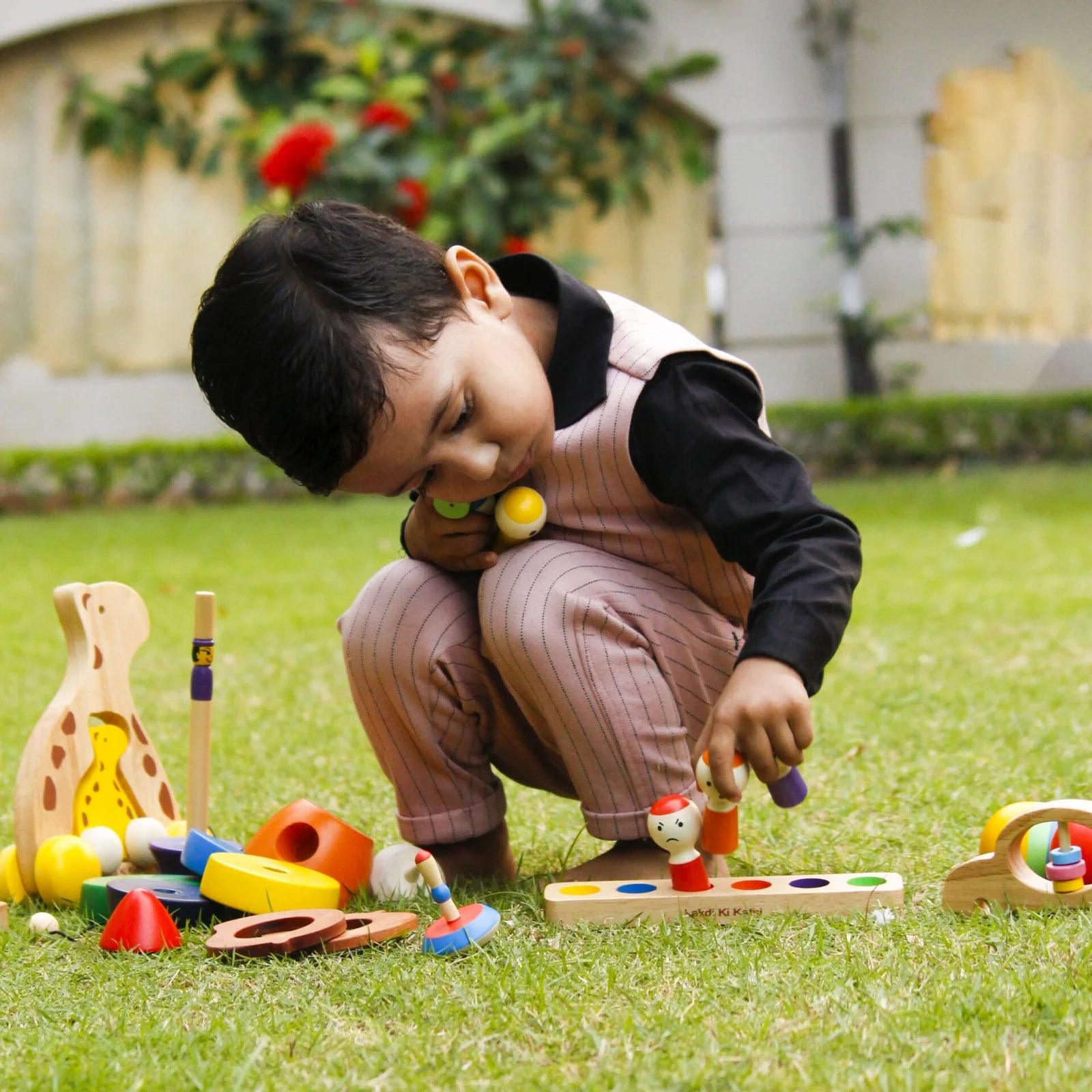
How Wooden Toys for 3-Year-Olds Encourage Early Learning and Creativity
Toys do more than entertain children; they are crucial in developing young minds. Wooden toys are among the best types of toys for promoting early learning and creativity in young children. Wooden toys offer a perfect balance of simplicity, durability, and educational value for parents of 3-year-olds. From encouraging creativity to boosting motor skills, wooden toys for 3-year-olds provide a range of benefits that plastic or electronic toys cannot match.
Promoting Creativity and Imagination
One of the most significant advantages of wooden toys is their simplicity. Unlike flashy electronic toys that often do the "thinking" for the child, wooden toys encourage open-ended play. Without pre-programmed functions or sound effects, children must use their imagination to bring the toys to life. Children can create their worlds by turning wooden blocks into a towering castle or imagining a wooden train set chugging along.
For 3-year-olds who are just beginning to explore their creativity, wooden toys for 3-year-olds provide the perfect canvas for imaginative play. A simple set of wooden animals or building blocks can quickly become a zoo, a farm, or a space station. This kind of play allows children to stretch their imagination, experiment with different scenarios, and think critically – all essential skills for their overall cognitive development.
Enhancing Fine Motor Skills and Coordination
At age 3, children are rapidly developing their motor skills, particularly their fine motor control, which is essential for tasks like writing, drawing, and buttoning clothes. Wooden toys for 3-year-olds, like stacking blocks, puzzles, and shape sorters, are fantastic for promoting hand-eye coordination and fine motor skills.
When children pick up, stack, or move wooden blocks, they are exercising their hand muscles and improving their grip. Wooden puzzles also require children to turn and fit pieces into the correct slots, helping them refine their motor control while having fun. The tactile nature of wooden toys offers a more grounded, hands-on experience than plastic or electronic alternatives, helping children learn through touch and manipulation.
Supporting Problem-Solving Skills
Wooden toys, such as puzzles or building sets, are excellent for helping children develop problem-solving skills. These toys encourage children to explore how various parts connect and how to arrange blocks to build a steady structure. Wooden toys for 3-year-old girls and boys alike encourage critical thinking by presenting tasks that require logical reasoning and patience.
For instance, wooden shape sorters require children to recognize different shapes and figure out which hole each shape fits into. This type of play helps kids learn how to approach challenges systematically. Similarly, wooden puzzles demand concentration and focus as children work through the problem of fitting all the pieces together.
These problem-solving activities lay the foundation for more complex cognitive skills, such as mathematics and science, as children learn to analyze and solve problems through play.
Encouraging Social Interaction
While many electronic toys are designed for solo play, wooden toys often promote social interaction. Simple toys like wooden trains, dollhouses, or pretend kitchen sets encourage cooperative play, where children can share roles, communicate, and work together. Whether taking turns playing with wooden toys or building a shared block tower, children learn valuable social skills like patience, cooperation, and teamwork.
Wooden toys for 3-year-olds are great for encouraging group interaction. They can be used in educational settings such as preschools or playgroups, where children learn to interact with their peers. Playing together fosters emotional development and builds essential language and communication skills.
Environmentally Friendly and Safe
Parents often choose wooden toys for 3-year-old baby girls and boys because they are safer and more eco-friendly than plastic toys. Wooden toys, crafted from natural substances, lack the harmful chemicals such as BPA and phthalates often present in plastic toys. Their natural composition renders them a safer alternative, particularly for toddlers who frequently put toys in their mouths.
Additionally, wooden toys are durable and long-lasting. Wooden toys, unlike their plastic counterparts, are durable enough to endure rough play and can be passed down through generations. This durability makes wooden toys a more sustainable option for parents who want toys that have educational value and a lower environmental impact.
Promoting Independence
Wooden toys for 3-year-olds also encourage independent play. Since these simple toys require no batteries or instructions, children can explore them at their own pace, figuring out how they work through trial and error. This fosters a sense of independence and confidence as children learn to engage with their toys without constant guidance or supervision.
Through independent play, children develop self-confidence and the ability to entertain themselves, which is crucial for their emotional growth.



